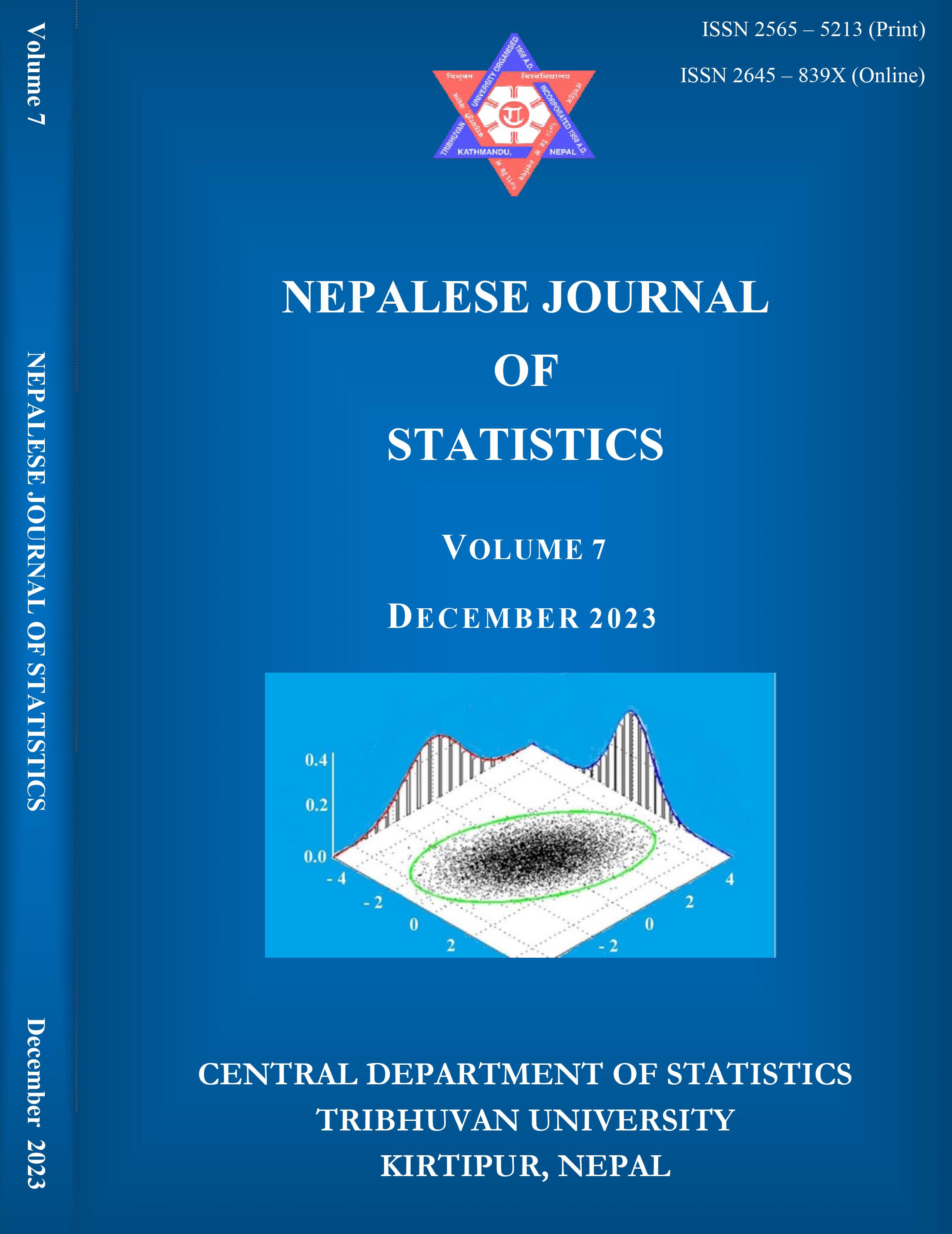Comparative Study of Risk in General-Finance and Production-Service Categories of NEPSE Market
DOI:
https://doi.org/10.3126/njs.v7i1.61057Keywords:
ADF-test, ARIMA model, GARCH, Ljung-Box test, stationarity, volatility clusteringAbstract
Background: The study of risk in investment in the stock market has become a popular area of research since last few decades. The inherent nature of risk that is associated with volatile behavior of stock prices as well as of returns of investment makes investors to think more than once before investing in stock markets. In this regard, this research is focused on comparison of risk associated with investment in General-Finance and Production-Service groups of the NEPSE market.
Objective: Primary objective of this research is to assess and compare risk present in the ‘General-Finance’ group and the ‘Production-Service’ group of the NEPSE market.
Materials and Methods: Different companies enlisted in the NEPSE stock market are categorized into ten groups. Some of the groups are related to direct financial activities and they are placed in the ‘General-Finance’ group. Other groups which are related to production and service activities are placed in the ‘Production-Service’ group. Daily means of NEPSE indices for these groups, available from official website of NEPSE are used to fit ARIMA model to the indices of ‘General-Finance’ and to ‘Production-Service’ groups. It is attempted to compare risks in these two groups with respect to the variance of error terms of the fitted models. Moreover, GARCH models are employed to describe conditional heteroscedasticity present in observations.
Results: It is observed that ARIMA (1, 1, 3) is the optimal model for daily indices of ‘General-Finance’ group with variance of errors terms observed to be 4636.1933. For the ‘Production-Service’ group the optimal model resulted is ARIMA (1, 1, 1) with variance of error terms being 1335.0058. Conditional heteroscedasticity and volatility clustering are observed to have GARCH (1, 1) model for both the groups.
Conclusion: After observing variance of error terms of optimal ARIMA models for ‘General-Finance’ and ‘Production-Service’ group and coefficients of GARCH models, it is concluded that ‘General-Finance’ group owes more risk in investment than that in ‘Production-Service’ group.
Downloads
Downloads
Published
How to Cite
Issue
Section
License
© Central Department of Statistics, Tribhuvan University, Kirtipur, Kathmandu, Nepal
The author of article must sign the copyright permission or the author must assign copyright to the Central Department of Statistics, Tribhuvan University prior to publication.
All rights reserved.




